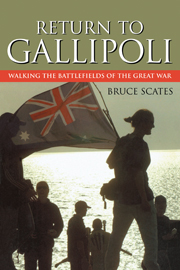Book contents
- Frontmatter
- Contents
- List of illustrations
- Note on money, measurement and terminology
- List of abbreviations
- Acknowledgments
- Introduction: journeys into history
- Part I Loss, Memory, Desire
- 1 The unquiet grave: imaginary journeys
- 2 Hearts of stone: creating the cemeteries of the Great War
- Part II Family Journeys
- Part III Soldiers' Tales
- Part IV Testament of Youth
- Conclusion: journey's end
- Epilogue: The ghost of memory
- Notes
- Survey Informants
- Index
2 - Hearts of stone: creating the cemeteries of the Great War
Published online by Cambridge University Press: 22 September 2009
- Frontmatter
- Contents
- List of illustrations
- Note on money, measurement and terminology
- List of abbreviations
- Acknowledgments
- Introduction: journeys into history
- Part I Loss, Memory, Desire
- 1 The unquiet grave: imaginary journeys
- 2 Hearts of stone: creating the cemeteries of the Great War
- Part II Family Journeys
- Part III Soldiers' Tales
- Part IV Testament of Youth
- Conclusion: journey's end
- Epilogue: The ghost of memory
- Notes
- Survey Informants
- Index
Summary
In the winter of 1919, as the mud finally settled in Flanders, C. E. W. Bean began the long journey back to Gallipoli. A war correspondent now charged with the task of writing the Official History, Bean had many reasons to return there. For him the Peninsula was still a place of ‘riddles’. Why had the landing boats drifted so far north? How far inland had the first troops advanced? Where were the Turkish guns concealed: behind which of the gullies? On which of the ridges? As the leader of the Australian Historical Mission, Bean had prepared over a hundred such questions to put to the Turkish authorities ranging over every aspect of the campaign. But the most enduring mysteries only the landscape itself could answer. Camped at Lemnos, he gazed longingly across the water to the distant Dardanelles, ‘clustered clouds’ on the horizon smudging the hilltops of the Peninsula. ‘Do you know’, he confessed to his brother, ‘I am as homesick as can be for Anzac’.
Bean finally arrived at Gallipoli ten days later. Leaving the main party to set up camp, he set off hurriedly for ‘the Pine’, determined to retrace the old lines of the trenches. ‘It gave a strange thrill’, he wrote, ‘to ride … in front of Steele's, Courtney's and Quinn's where three years before men could not even crawl at night’. Then, despite the massing rain, Bean plunged down the muddied ravine to the beaches.
- Type
- Chapter
- Information
- Return to GallipoliWalking the Battlefields of the Great War, pp. 34 - 60Publisher: Cambridge University PressPrint publication year: 2006



